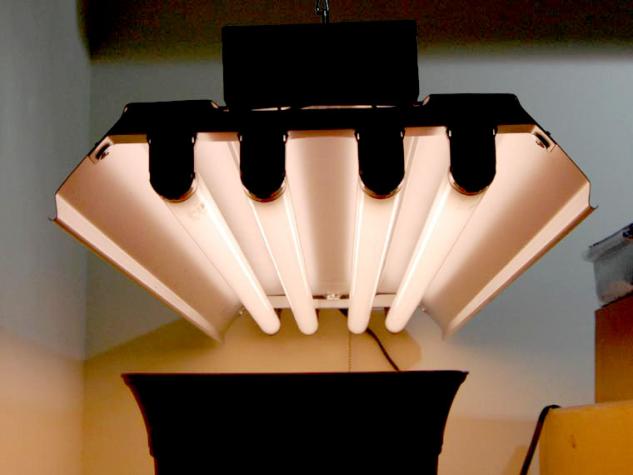COLUMBIA, Mo. – Getting plants to grow and thrive indoors can be a challenge. Indoor light is often too low and of poor quality. A light garden can correct that.
“A facility to grow plants under artificial light inside the home is a light garden,” said David Trinklein, horticulture specialist for University of Missouri Extension. “It can be used to grow tropical plants like African violets, but most often it is used for starting seeds.”
Setting up a light-friendly garden indoors has many advantages for vegetable and flower gardeners, Trinklein said. It gives you greater choice of varieties since you’re not limited to a local nursery’s inventory. It can save you money: Once you recoup the initial equipment investment, you can populate gardens and flower beds less expensively with home-grown plants rather than purchased ones. It also allows you to protect seedlings when they’re most vulnerable.
“We can do a much better job of controlling the environment for the germinating seeds,” Trinklein said. “We can control water, light and temperature, plus we can protect them from diseases, insects and animals.”
A successful light garden starts, of course, with the right kind of light.
Plants need light in red and blue wavelengths to grow and thrive. Sunlight contains the full spectrum of wavelengths. Indoors, the correct type of bulb is needed to insure the proper wavelengths for the plants.
“Incandescent bulbs are the worst choice. Although they emit abundant red light, they are very poor in blue light. Additionally, they emit a lot of infrared wavelength, which produces too much heat,” Trinklein said.
Fluorescents are more energy efficient, but care must be taken to select bulbs that will provide the wavelengths needed, he said. For example, cool white fluorescents are a good source of blue light but produce limited red. Warm white provides additional red light, while maintaining adequate blue output.
Wavelength-specific bulbs are available, and are often sold specifically as plant lights. These are designed to create a balance between the blue and red wavelengths.
“Although plant lights emit reds and blues quite well, they do not have the intensity of other fluorescent bulbs,” Trinklein said. “Therefore, the current recommendation is to use a 50-50 mixture, by wattage, of plant light bulbs and cool white fluorescent in the same fixture.”
Trinklein says you can make up for inadequate intensity by running the lights longer. He recommends keeping them on for 18 hours a day.
A light garden can be as simple or elaborate as you wish. You’ll need a frame that can support a fluorescent fixture and a waterproof tray to hold the plants.
Once your light garden is up and running, you’ll have the satisfaction of watching your plants go from seed to maturity, Trinklein said. This gives you a wonderful sense of accomplishment, a feeling every successful gardener knows well.
For more information, see the MU Extension publication “Lighting Indoor Houseplants” (G6515), available for free download.
Writer: Debbie Johnson
